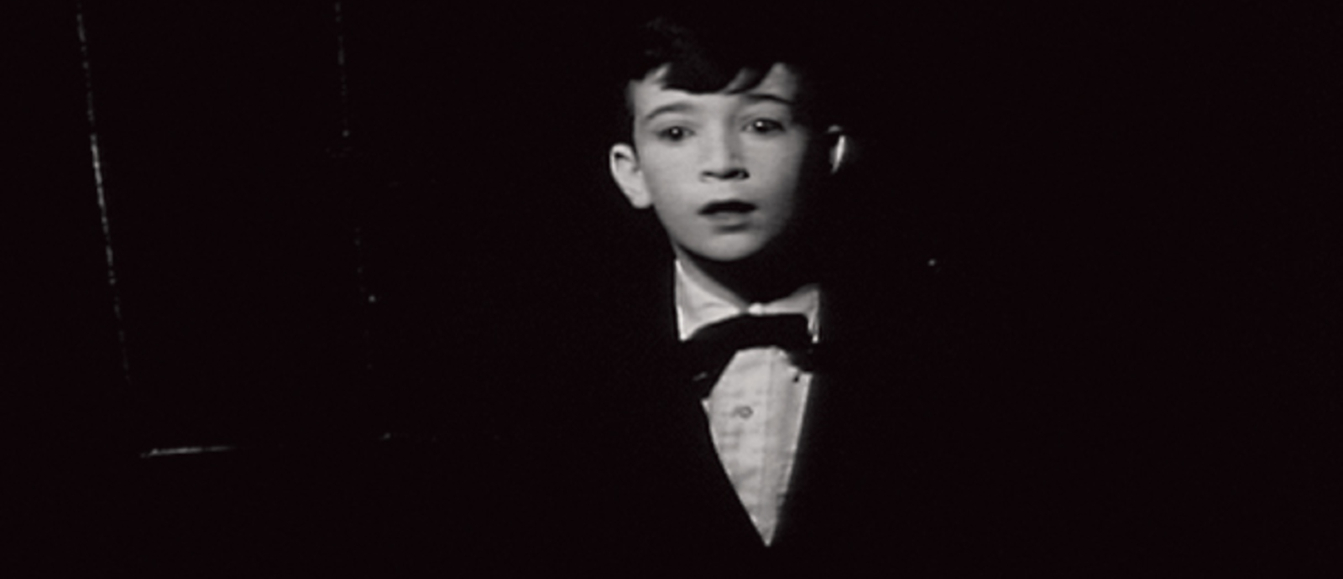A Tour of the Short Films of David Lynch
By Sean Hughes
22 July 2022
Few filmmakers develop such a unique and striking style as to have a term dedicated to their films and those they inspire, but David Lynch is one such filmmaker. A career spanning genres and encompassing features, television, music, and art, he is a limitless creative for whom the term “Lynchian” only scratches the surface. Nowhere is this more evident than in the collection of his short film work screening at the QFT on 23 July as part of the Film Feels Curious season.

A manifesto for Lynch’s work and style, this collection covers 30 years of his extensive career, from experimental student animations to his first commissioned piece for the AFI. It is a jigsaw of ideas, the exploration of which help define the roots of Lynch as a filmmaker.
The collection’s earliest entry is the 1966 animated short Six Men Getting Sick. Produced during Lynch’s time at the Pennsylvania Academy of Fine Art, the film was borne out of a desire to see movement in his paintings. He learned the basics of stop motion animation and constructed a 10ft sculpted wall to which he added three plaster casts of his own head, before painstakingly animating the paintings across the wall frame by frame. The resulting film is a one-minute loop of six figures, combining painting, sketch, and sculpture, who slowly develop stomachs before their crimson contents are involuntarily spewed across the frame, all accompanied by an ominous siren loop. A painter more than a filmmaker prior to this project, in many ways the seeds of Lynch’s striking visual style are here. Lynch entered the project in an experimental painting and sculpture festival in 1967, with a specially constructed rig to raise the projector and carry the image up the sculpted wall. His effort was rewarded, winning joint first prize and the praise of the judges.
Only two years later, Lynch, in one of his earliest references to dreams, would produce his second film, The Alphabet: a 4-minute film combining animated and live action, and inspired by his then wife Peggy’s niece who, during a nightmare, recited the alphabet. If his first effort speaks to Lynch’s distinct visual tableaus, The Alphabet reflects his keen interest in exploring the subconscious attempting to give visual form to the logic and feelings of dreams. The film centres on a girl, played by Peggy, bouncing around her room in distress, as chants of the alphabet can be heard. An animated section shows an A give birth to smaller letters, before the film descends into unnerving surreal imagery. Lynch painted the walls of his bedroom black and Peggy’s face white to provide an other-worldly contrast between the two as she shot around the room. The animated sequences were all created by Lynch and feature elements of his trademark body horror. The soundtrack is an area where this second project truly shines. Lynch mixed sounds including sirens, screams, wind and even a damaged recording of his young daughter crying to create the surreal feeling of a distressed mind. This visualisation of dreams can be seen throughout his work, in Mulholland Drive and Eraserhead especially, with the DNA of these 4 minutes evident thirty years later in the frenzied finale of the second season of Twin Peaks.
We jump forward two more years to Lynch’s first officially commissioned short by the American Film Institute, The Grandmother. Following the warm reception of his first two short films, Lynch submitted a script to the AFI, alongside his previous work. The submission was picked up and the result was Lynch’s first full-bodied foray into the surrealist horror-tinged stories for which he would become known. The Grandmother shares motifs with other pieces of the Lynchian catalogues including Mulholland Drive, Twin Peaks and Blue Velvet with Lynch turning his unique gaze to exposing a darker underbelly to the typically idyllic. In this instance, that gaze is turned on the family unit. The film centres on a young boy, who once birthed from the ground, finds only abuse from his parents. The Boy goes to grow a Grandmother figure from seeds to provide him comfort.
The grandmother’s method of arrival could suggest a meditation on the trappings of life and how family can be found even outside these units. Unfortunately, this comfort is not to last. As the boy’s story takes a darker turn, the short but evocative story culminates in a haunting finale tinted with that same uncomforting but familiar feeling of dread which permeates much of his work. The Grandmother once again slips between mediums, using animation to illustrate the boy’s interpretations of his abuse. The soundscape Lynch crafts around this film is something special, from the folk guitar defining the boy’s joyous relationship with the Grandmother, to the menacing dirge-like quality to the remainder of the soundtrack, and the unique vocals of the cast whose dialogue is limited to primal screams and sinister snarls. The Grandmother could be an early draft of Lynch’s feature opus Eraserhead, both in its eerie stylings and sinister sound to its peeling back of the darker emotions surrounding ideas of childhood and family.
Next, is two shorts which, despite the decades between them, pair off interestingly: 1973’s The Amputee and 1995’s Premonitions Following an Evil Deed. More than twenty years apart, these films were both projects centred on unique film technologies. In 1973 this was testing a new video tape stock. Frederick Elmes had been asked to film test footage for the AFI, and Lynch, who at the time was struggling to finance the completion of Eraserhead, volunteered. While in 1995 to celebrate the centenary of the Lumiere camera, Lynch alongside 39 other international filmmakers were asked to make one-minute films on an original restored Lumiere camera. In both instances Lynch was able to stretch his creativity. Working within and around the constraints set by the Lumiere camera to create the illusion of an edit despite the camera’s exposure limitations and filming The Amputee without sound before recording the audio live afterward. Despite the short run times and focused subject matter of both, Lynch was able to find a way to incorporate his own experimentation and creativity.
Having touched on elements of each of these fantastic shorts, we can trace the development of Lynch’s career from student films to significant commissions and the growth of his style and ideas, which would be honed throughout his future feature and TV work. Although, most importantly, we can understand the creative process of one of the most fascinating modern filmmakers, someone guided by intuition and the subconscious with the innate ability to drive at feelings and emotions both common to all and still somehow unique. This ultimately is Lynch’s greatest quality as a filmmaker, the ability to build on these elements that allow the audience to interpret his films however they please, something Lynch encourages, and to bring as much of themselves to his films as he does.
For long-time Lynch fans, this collection provides a truly unique insight into his developing style with interesting parallels to his feature films, notably Eraserhead and Mulholland Drive. While for newer fans, this selection of shorts acts as an exceptional entry point to Lynch’s unique landscape of cinema. The chance to experience the arresting visuals and captivating soundscapes from across such a storied career on the big screen is an opportunity not to be missed.




